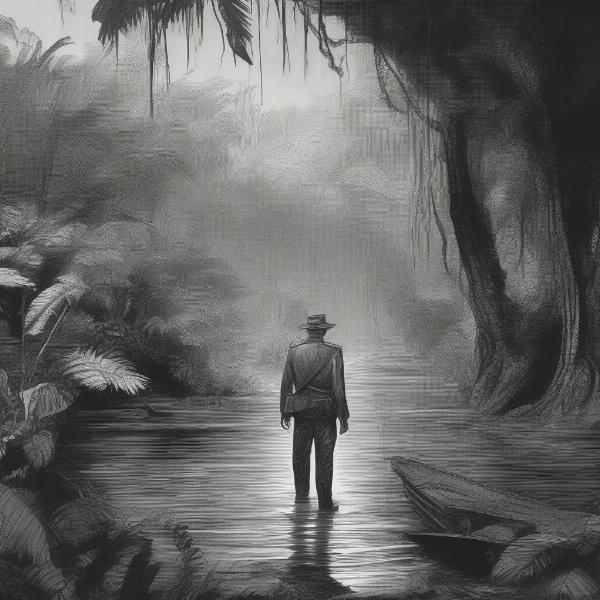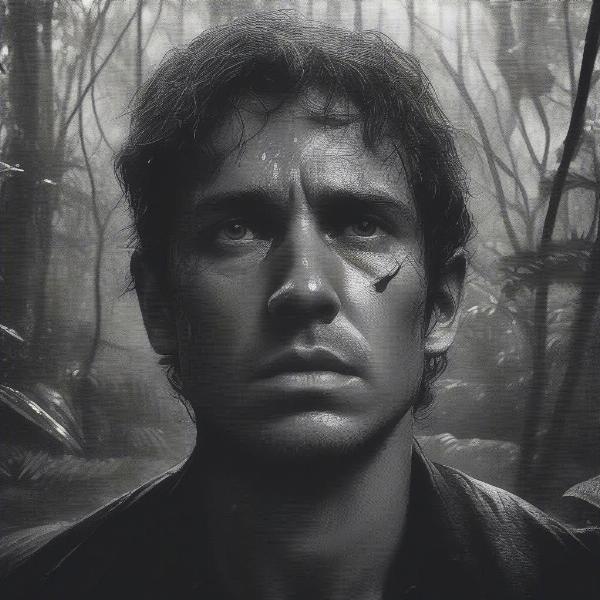Richard Connell’s thrilling short story, “The Most Dangerous Game,” keeps readers on the edge of their seats with its suspenseful plot and thought-provoking themes. One of the most crucial elements of this story is its climax, a pivotal moment that determines the fate of the protagonist, Sanger Rainsford. This article will delve into what exactly constitutes the climax of “The Most Dangerous Game,” exploring the events leading up to it and its significance within the narrative.
As Rainsford, a renowned big-game hunter, finds himself stranded on the ominous Ship-Trap Island, he encounters the enigmatic General Zaroff. Zaroff reveals his disturbing new prey: humans. Forced to participate in a deadly game of survival, Rainsford must use all his cunning and skill to outwit the General and escape the island. The rising tension and escalating conflict between Rainsford and Zaroff drive the narrative toward its inevitable climax. The story explores the blurred lines between hunter and hunted, raising questions about the ethics of hunting and the nature of human savagery.
Identifying the Climax of The Most Dangerous Game
The climax of “The Most Dangerous Game” is arguably the moment when Rainsford confronts Zaroff in his bedroom after seemingly jumping off a cliff into the sea. This is the point of highest tension in the story. The hunt has reached its peak, and one of the two must die. It’s a showdown of wills and survival instincts, marking a turning point from which there’s no return. The reader is left wondering who will emerge victorious from this final confrontation. It is a moment of ultimate suspense and determines the outcome of the entire story. This confrontation signifies the culmination of the hunt and the ultimate test of Rainsford’s skills and resilience. Similar to the thrilling moments in classic hunter vs. hunted scenarios, this scene encapsulates the essence of the story. This intense encounter forces both characters to face the ultimate consequences of their actions.
 Rainsford and Zaroff's Final Confrontation
Rainsford and Zaroff's Final Confrontation
The Build-up: Rising Action and Suspense
The rising action of the story contributes significantly to the impact of the climax. Rainsford’s initial disbelief and horror at Zaroff’s “game” gradually transform into a desperate struggle for survival. He sets elaborate traps, using his knowledge of hunting to his advantage, delaying the inevitable confrontation but intensifying the suspense. Each trap, each close call, builds the tension, leading the reader and Rainsford closer to the ultimate showdown. These strategic moves highlight Rainsford’s adaptability and resourcefulness in the face of danger. The reader is constantly kept guessing about his next move and whether it will be enough to outsmart Zaroff. You can find out more about what is the rising action of the most dangerous game by visiting our related article.
The Falling Action and Resolution
Following the climax, the falling action sees the resolution of the conflict. While the exact details are left to the reader’s imagination, Connell implies that Rainsford has defeated Zaroff, emerging as the ultimate survivor. This ending, although abrupt, leaves a lasting impression, underscoring the brutal nature of the game and the lengths to which Rainsford had to go to survive. The ambiguity surrounding the final outcome adds a layer of complexity, prompting readers to ponder the psychological impact of the experience on Rainsford.
 Rainsford Escaping Ship-Trap Island
Rainsford Escaping Ship-Trap Island
Exploring Themes of Hunter and Hunted
The climax underscores the central themes of “The Most Dangerous Game.” It forces us to question the nature of hunting and the ethics of pursuing another being for sport. Rainsford’s transformation from hunter to hunted emphasizes the vulnerability of all living creatures. The story’s ending leaves a lingering question: has Rainsford become like Zaroff in the process of surviving? This moral ambiguity adds depth and complexity to the narrative, prompting further reflection on the nature of humanity.
“The climax forces us to confront the inherent savagery that can lie dormant within us all,” says Dr. Amelia Hart, Professor of Literature at the University of California, Berkeley. “It is a stark reminder of the thin line between civilization and primal instinct.”
The Psychological Impact of the Climax
The psychological impact of the climax on both Rainsford and the reader is significant. Rainsford, forced to confront his own mortality, experiences a profound shift in perspective. He is no longer simply a hunter but also prey, understanding the fear and desperation of the hunted. The climax also leaves a lasting impact on the reader, forcing them to grapple with the ethical implications of the story. It is a chilling reminder of the darkness that can reside within human nature.
 Rainsford's Psychological Transformation
Rainsford's Psychological Transformation
Alternative Interpretations of the Climax
Some argue that the true climax occurs earlier, when Rainsford jumps from the cliff, believing it to be his only escape. This moment represents a turning point in Rainsford’s mindset, as he chooses to face death rather than submit to Zaroff’s game. This interpretation highlights Rainsford’s resilience and refusal to become another victim. It can be argued that this act of defiance is the culmination of Rainsford’s struggle against Zaroff, demonstrating his unwavering will to survive.
The Enduring Legacy of “The Most Dangerous Game”
“The Most Dangerous Game” continues to resonate with readers decades after its publication. The story’s powerful exploration of human nature, the thrill of the hunt, and the blurred lines between hunter and hunted remain timeless themes. The climax, the point of no return, serves as a potent reminder of the consequences of our actions and the darkness that can lurk beneath the surface of even the most civilized individuals.
“Connell’s masterpiece continues to grip audiences because it forces us to confront uncomfortable truths about ourselves,” remarks Dr. James Blackwood, literary critic and author of “Exploring the Dark Side of Literature.” “The climax serves as a mirror, reflecting the potential for both savagery and resilience within the human spirit.”
Conclusion
The climax of “The Most Dangerous Game,” the confrontation between Rainsford and Zaroff in the General’s bedroom, marks the culmination of the suspenseful hunt and the ultimate test of Rainsford’s will to survive. This pivotal moment defines the story’s resolution and underscores its key themes, leaving a lasting impact on the reader. It reinforces the idea that in the most dangerous game, the hunter can quickly become the hunted, challenging our understanding of humanity and the ethics of pursuing another being for sport. What are your thoughts on the climax of this classic story? Share your interpretations and engage in the discussion below!
FAQ
-
What is the main conflict in “The Most Dangerous Game”? The main conflict revolves around Rainsford being hunted by General Zaroff.
-
Why does Zaroff hunt humans? Zaroff hunts humans because he believes they are the only prey cunning enough to provide a real challenge.
-
What are some of the traps Rainsford uses? Rainsford uses a Malay Mancatcher, a Burmese tiger pit, and a Ugandan spring trap.
-
Does Rainsford kill Zaroff? The ending suggests Rainsford has killed Zaroff, though it’s not explicitly stated.
-
What is the significance of the island’s name, Ship-Trap Island? The name foreshadows the danger that awaits those who stumble upon the island, just as Rainsford did.
-
What is the central theme of the story? The central theme explores the ethical boundaries of hunting and the blurred lines between hunter and hunted.
-
How does the ending contribute to the story’s meaning? The ambiguous ending leaves the reader to ponder the psychological toll the experience has taken on Rainsford and the question of whether he has become like Zaroff.

